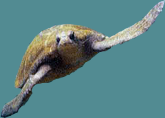Purpose of Fauna Monitoring
Institutions such as the Charles Darwin Foundation and Non-Governmental Organizations, such as the World Wildlife Fund (WWF) have contributed money, time, and energy to preserving the unique array of wildlife on and around the Galapagos archipelago. The research is extensive, ranging from counting individual populations of Flightless Cormorants to preserving unique species such as the Marine Iguana for generations to come. The current organizations involved in monitoring the Galapagos have encompassed a huge range of factors. More funding will be drawn from the Biopreserve committee and the international trust to support this valuable flow of information. Also, any research done on the islands will be integrated into the central database system. This way, scientists will know what has been done before so they can avoid a huge overlapping of research and direct their energies to other areas. A centralized database will not only organize past and present information, it will accurately determine where funds need to be directed.
[top]
Invasive Species of the Galapagos
Pigs: Pigs are among the most destructive of the invasive species. Pigs trample the nests of ground nesting birds, Giant Tortoises, and Sea Turtles, and also eat the eggs of these species for food. Occasionally, pigs will compete with natural species for food resources. In the 1970s, it took one pair of pigs to destroy 23 tortoise nests on the island of Santa Cruz over the period of one month.
Goats: Goats destroy the natural habitat of Galapagos Giant Tortoises and eat great quantities of endemic plants.
Doves: Doves are a threat to other birds, in that they carry many diseases and spread them to other birds on the islands, especially Darwin Finches, which are endangered on San Cristobal.
Cats and Dogs: Cats and dogs threaten the Marine and Land Iguanas, lizards, tortoises, and birds throughout the Galapagos. Cats will feed on birds, lava lizards, and marine iguanas.
Rats: Rats, similar to Doves, are harmful in that they carry and spread disease to other creatures on the islands. Along with transmitting disease, rats also eat the eggs of birds and tortoises, as well as tortoise hatchlings.
Fire Ants: Fire ants are a threat to native and endemic birds, plants and other insects.
[top]
Control and Eradication of Invasive Species
The first part of our plan involves identifying where exactly the invasive species are located, and what harm they are doing to the ecosystem. From there we would be able to implement a long term strategy for eradication that minimizes the effect on the ecosystem. A similar project was already implemented in the Galapagos, entitled, “Control and Eradication of Invasive Species: A necessary condition for conserving endemic biodiversity of Galapagos World Heritage Site.” In this project, the main goal was listed: To constitute an example of how to handle the problem of invasive species by
- providing proven methodologies for eradicating invasive species and/or mitigating their effect
- establishing an effective and participatory quarantine system to prevent new introductions and the spread of existing ones
The project specifically dealt with the eradication of Smooth-Billed Anis, Black rats, little red fire ants, and feral cats among other species. In looking for solutions for eradication of the endangered species, we realize that we have to be sure that our method of eradication does not negatively impact the ecosystem. For example, increasing the salinity of the lagoons in order to kill the frogs would also negatively effect the fish in the lagoon.
The specifics:We would like to implement a continuous phase of the Control and Eradication of Invasive Species Project that would be managed by the International Biopreserve. The program would include an adaptive management plan that would implement an effective eradication plan after substantial research has been gathered to determine the best possible method of eradication. The project wouldn’t be concerned with specific numbers of invasive species, but rather their role in the destruction of the ecosystem, and how they can be eliminated without damaging the ecosystem.
Currently there are several short term solutions being implemented, that we would continue while the project is being completed.
One such short term solution is the Isabela Project, which involves shooting pigs and goats, since both are very harmful to the vegetation of the Galapagos.
The project which primarily takes place on Isabela would be extended to the other Islands.
We would also like to stop the introduction of invasive species by extending SICGAL’s fumigation of ships policy.
A long term solution might include the following:
The Black fly is known to be found near freshwater sources. The Black Fly carries bacteria strain of Onchocera Volvulus, which causes river blindness.
Black flies have caused serious sanitation problems throughout the Galapagos, mostly as a result of their ability to easily transmit disease.6 Black flies are blood-feeding insects, and therefore transmit many animal pathogens as they carry diseases from one animal to the next through their bites. It has been suggested that the bacteria bacillus thuringiensis israelensis could be used as a biological control of the black fly. Under our plan, further research on the effects of this bacteria on the ecosystem would be investigated until we are sure that we have considered and eliminated all possible dangers.
[top]
Copyright! All rights reserved.
Webmasters

